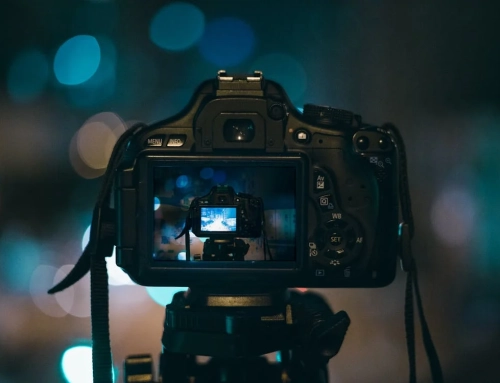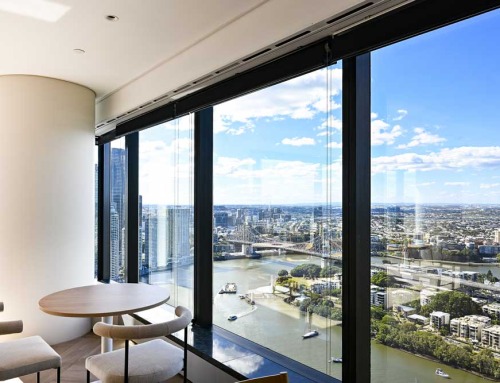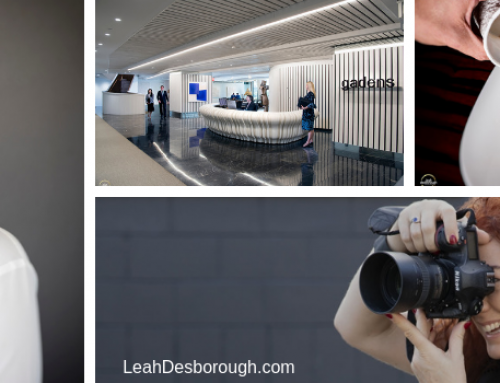For decades, companies have used the visual to market their products and establish their brand identity. Visual imagery has a way of communicating with people on a visceral level that the written word does not.
But while marketers have understood the importance of pictures for selling, it’s only recently become clear just how vital it is for building a convincing brand identity too. High-quality images say as much about your products and services as they do about your company values and mission.
While your website colors and logos already say a great deal about your company and what it stands for, your photography can take this to the next level. Something as simple as the type of headshot you choose for your key people (whether it’s profile or front-on, or black-and-white or color) can have an enormous effect on the way that you’re perceived. Subtle changes in the focus or style of images can communicate whether your brand is serious, fun, approachable, luxury, value, and practically anything in between.
Develop Your Culture
Perhaps one of the most critical places that your business branding photography can affect your brand identity is the perception of your corporate culture. By and large, customers don’t care about your internal company culture, but prospective employees do, and the way you present your company through photography can make a big difference in how they perceive you.
- Quirky. Some businesses, especially those in digital marketing, health food industry, video game developers, or leisure industry often use photography to make their teams seem more quirky and exciting. The idea is to show that people not only work towards the benefit of customers (or management) but can have fun on the job at the same time. You could use photos of team away days, people enjoying antics in the office (within reason), and the ways your organization has celebrated its successes.
- Career-driven. Other firms use photography to underscore their professionalism and the fact that they are concerned about the progression of the people who apply for work for them. A professional services company, therefore, might share photos of achievement award ceremonies or images of the quintessentially successful professional, complete with a black suit, tie, and big smile.
- Customer-focused. Many businesses have a mission that transcends that of the people who work for them and helps make the world a better place. All kinds of companies fall into this category, from healthcare firms to companies involved in education. Businesses in these sectors can use photography to show prospective employees that just like them, the firm is utterly committed to its customers and focused on serving them to the highest standards. Nothing is more important.
Convey Your Brand Identity To Customers
Just as the photography decisions you make can convey subtle (and not-so-subtle) messages to prospective employees, they can signal a lot about you to customers too.
Headshots
Headshots of you and your colleagues can have an enormous impact on how people perceive their brand, independent of your website colors, logos, typefaces, or marketing content. To see why, consider the following: a headshot of you wearing a funny wig or emerging from a drain, and another with arms folded wearing a suit and looking at the camera with a vaguely friendly, yet professional glare.
The former signals to customers that you’re all about fun, taking risks, and generally being “inventive and creative.” The latter tells customers that you’re reflective, serious, and that, in certain circumstances, you understand their plight.
Businesses involved in adventure and outdoor pursuits may benefit from the former, and those in the legal or professional services sector might want to choose the latter. It’s worth pointing out, however, that there are no hard-and-fast rules. Even if you operate in a “serious” or “severe” sector, there are often opportunities to be inventive with your branding photography.
Team Shots
A lot of companies use team shots, not only to get everyone in their branding photography but also to create an inclusive atmosphere. A team photograph says to customers, “everyone on our team is here to help you. Just look at all the people we have to serve your needs.” Team shots make your brand seem friendly, inclusive, and dedicated to their needs, especially when the team is sat smiling, facing the camera.
The setting of your team photograph matters considerably too. Many companies that use team photography as part of their branding take the photos in or around their offices. There’s nothing wrong with this: your offices are where the magic happens.
But you can have a dramatic effect on how your customers perceive you if you change the location of your team images. Sporting events and outdoor areas can help you appear more fun and adventurous. It can also help people to see your team as being more like them.
Workspace Shots
Like it or not, your workspace says a lot about your company. Google and other major tech firms regularly post images of their offices, complete with helter-skelter and ball pool, to communicate that they like to work and play hard. You can use your offices to make your brand appear more opulent, playful, luxury, or professional if there is an opportunity to do so.
If you want to explore how visual storytelling can help secure your brand identity, Leah Desborough Photography is here to help. We help you investigate the kind of brand that your customers would like you to build, and then help you grow it through photography. The ideas we’ve discussed above are just a small sample of the many ways in which you can use photography to make your brand stand out and create a sense of corporate and personal style.
At Leah Desborough Photography, we are your one-stop-shop for all your photography needs and can help you develop visual content applicable to multiple platforms. We go in-depth, choosing the types of shots that will convey what you and your firm are fundamentally about, whether that’s fun, whimsy, professionalism, luxury or anything else that’s important for brand identity.



